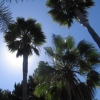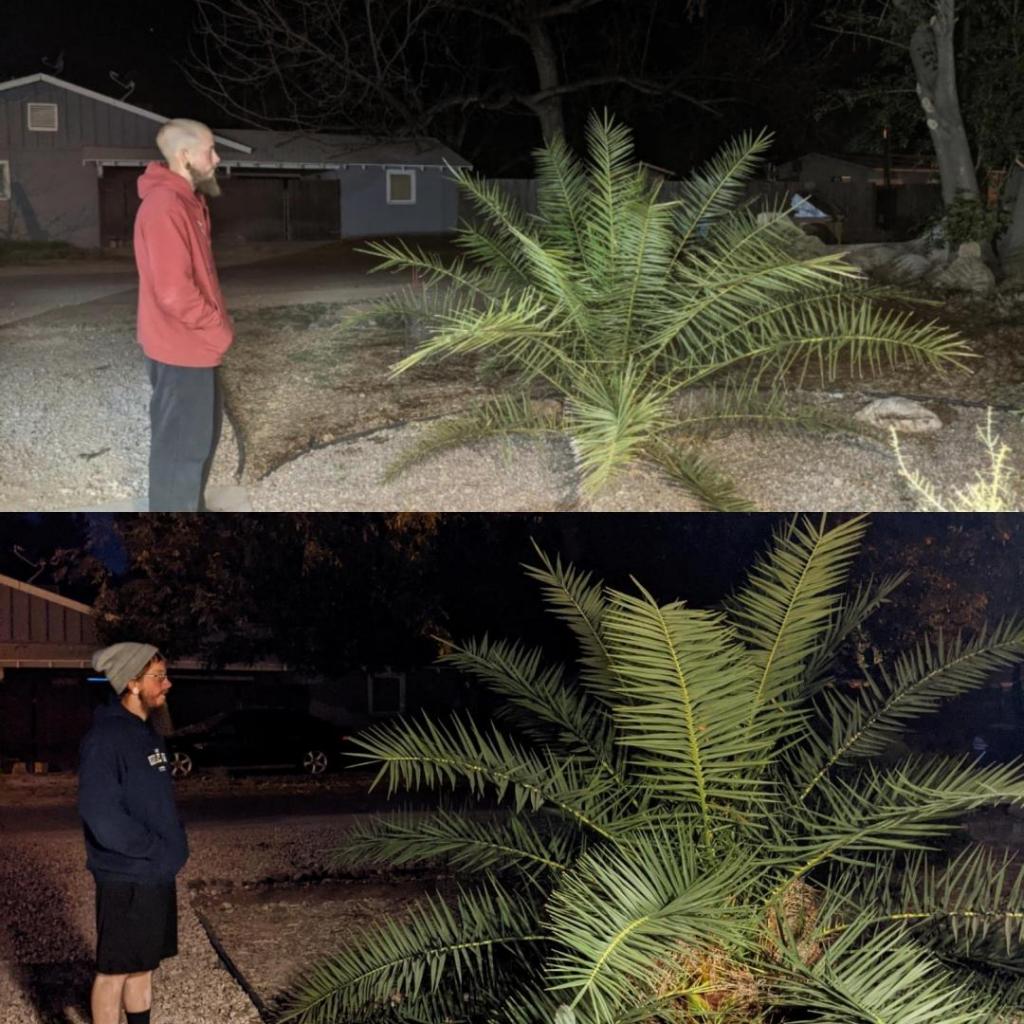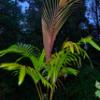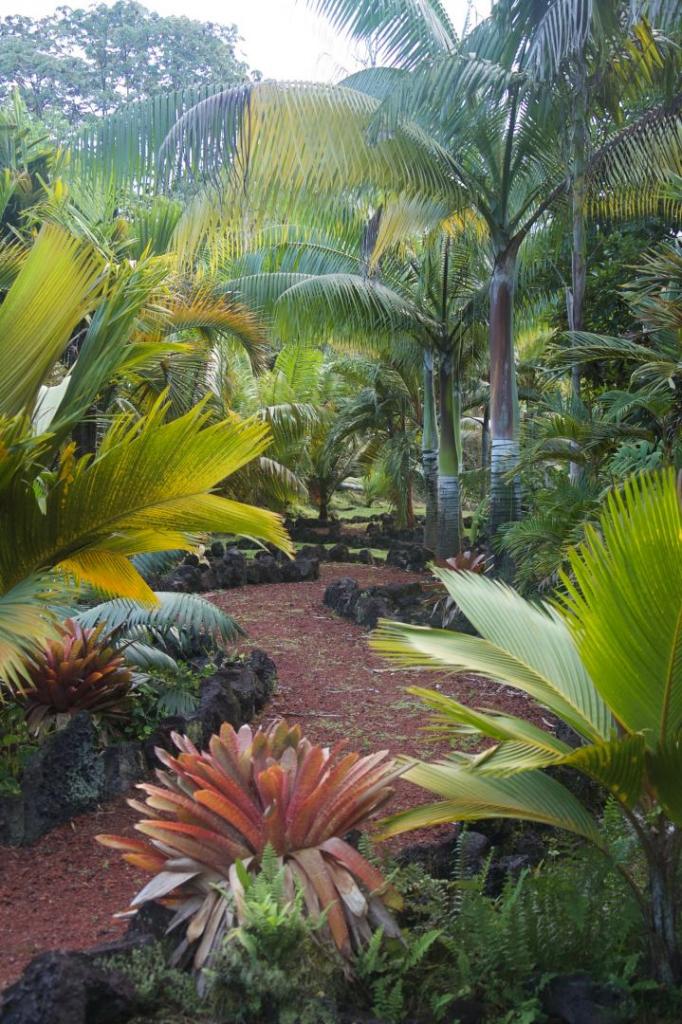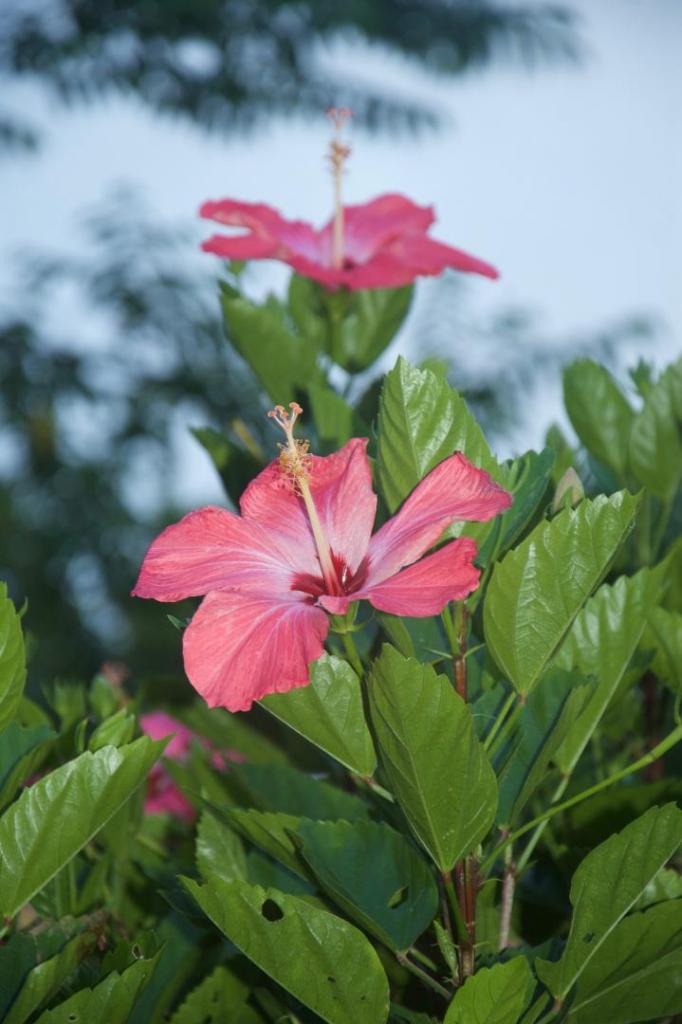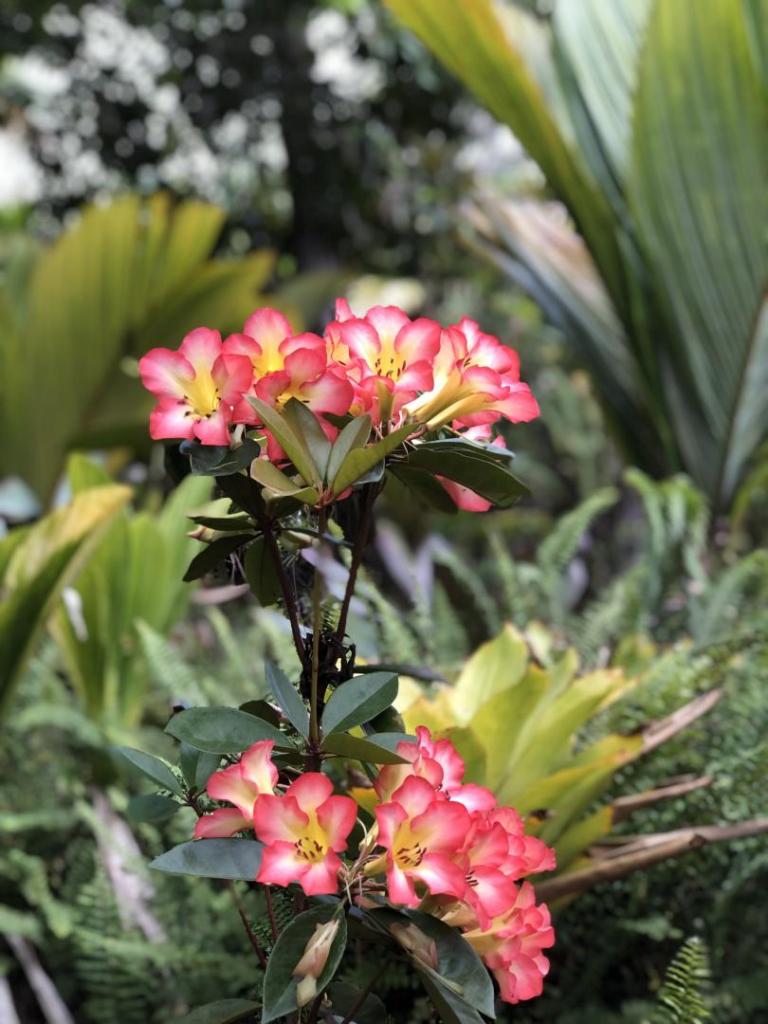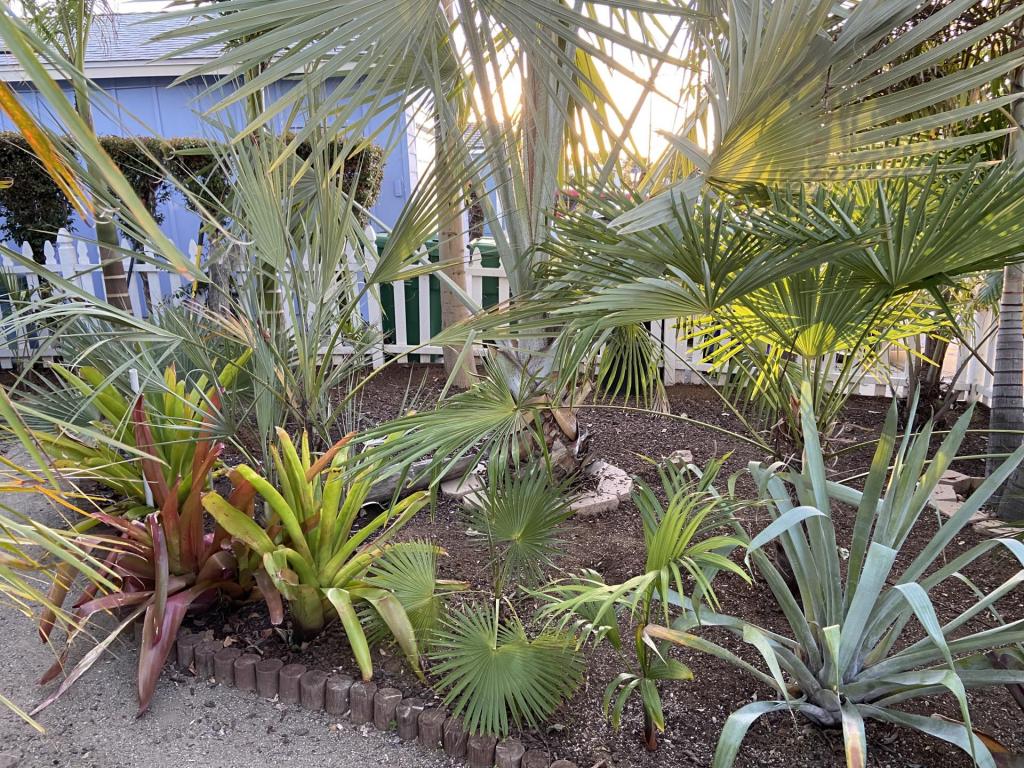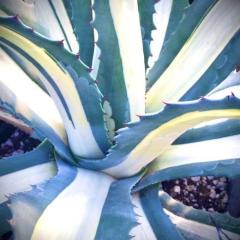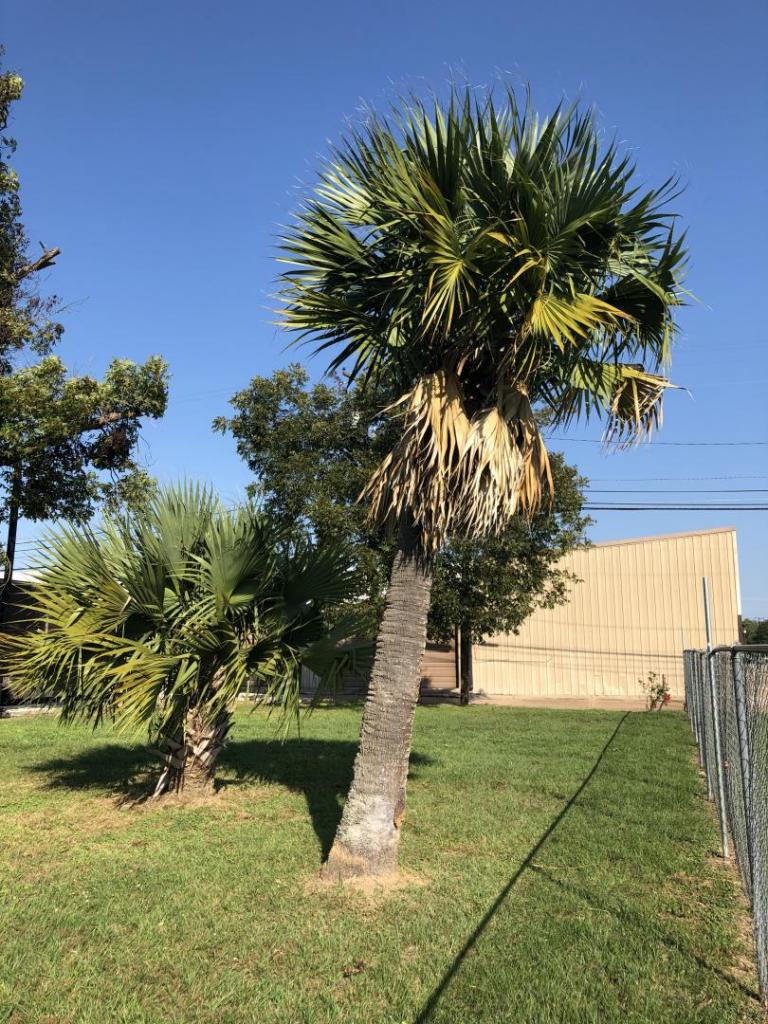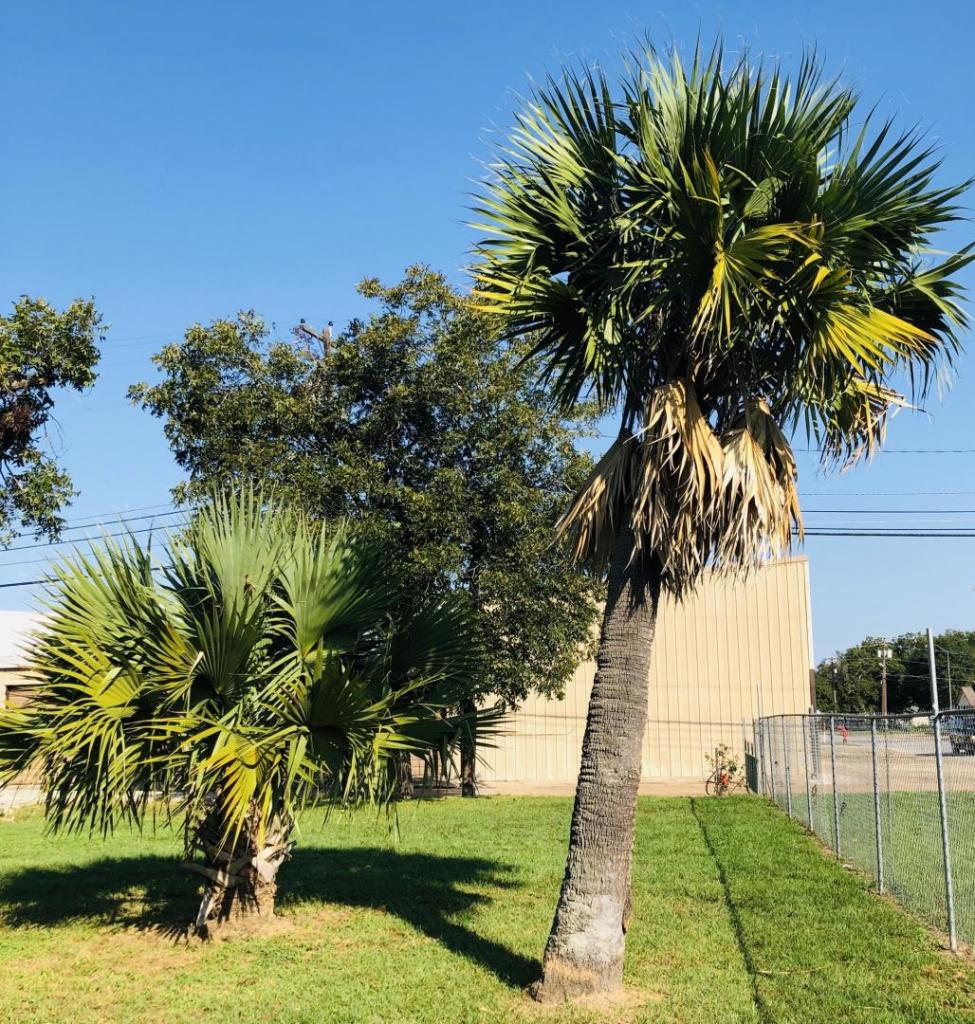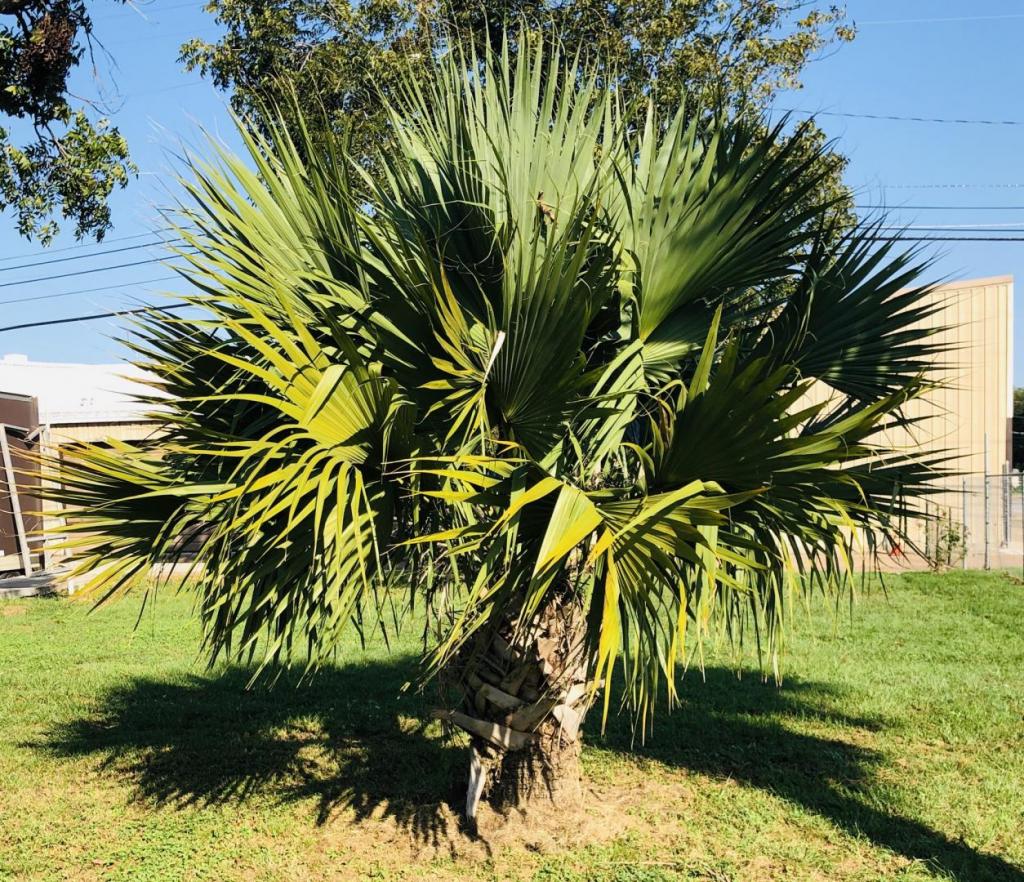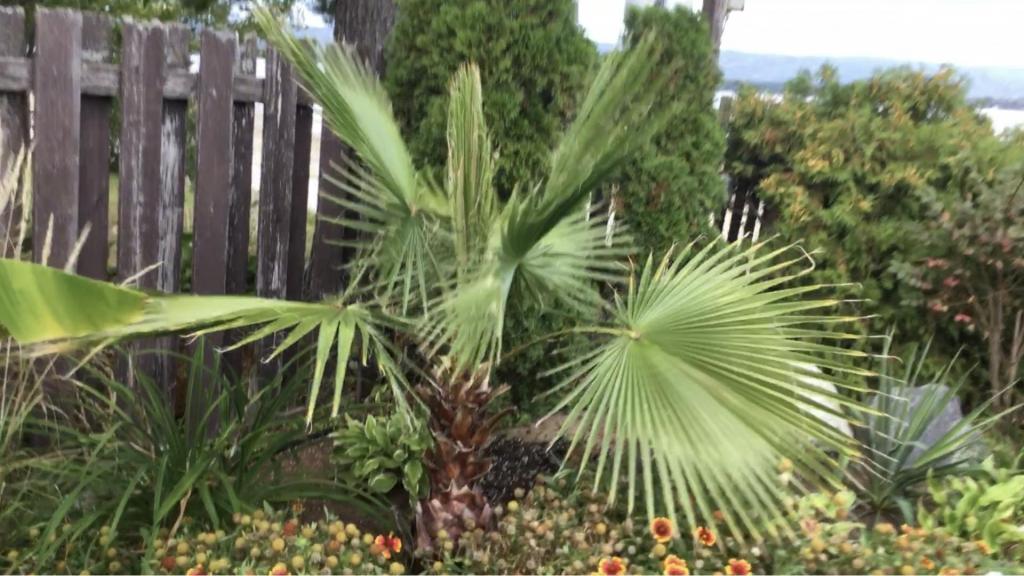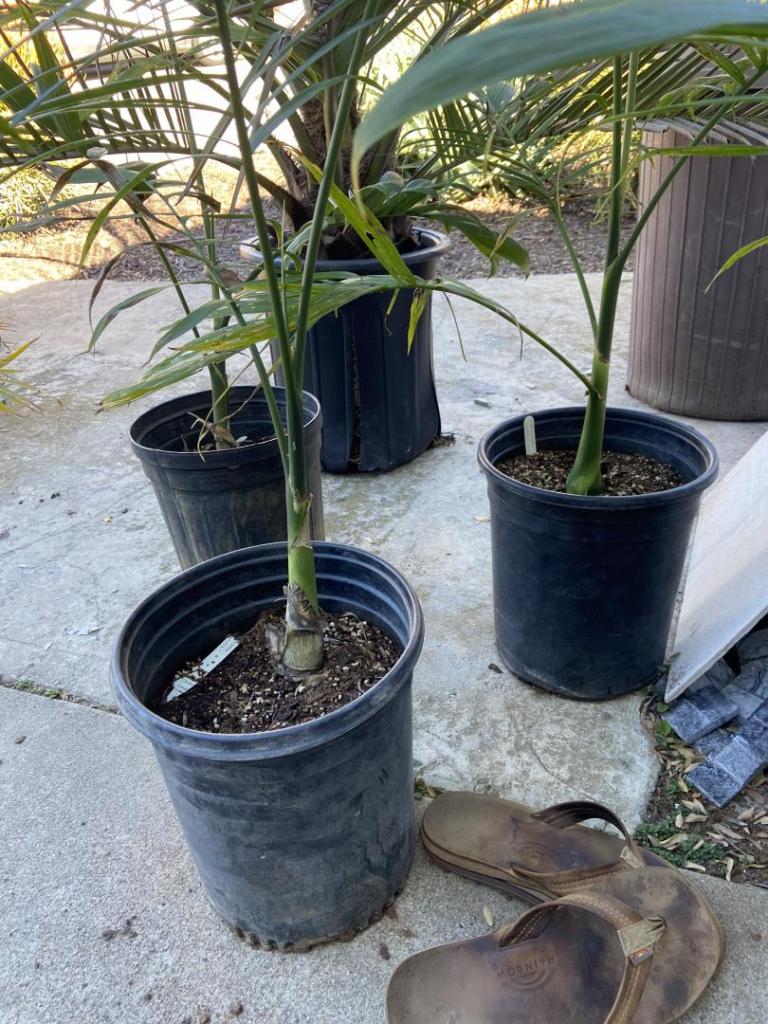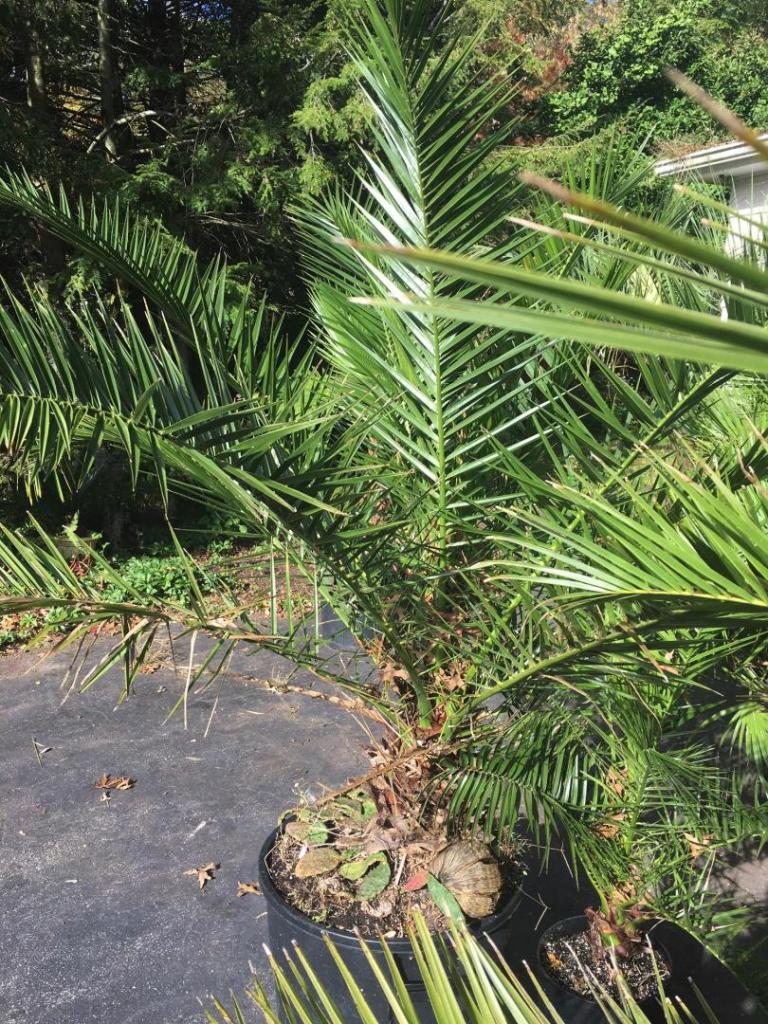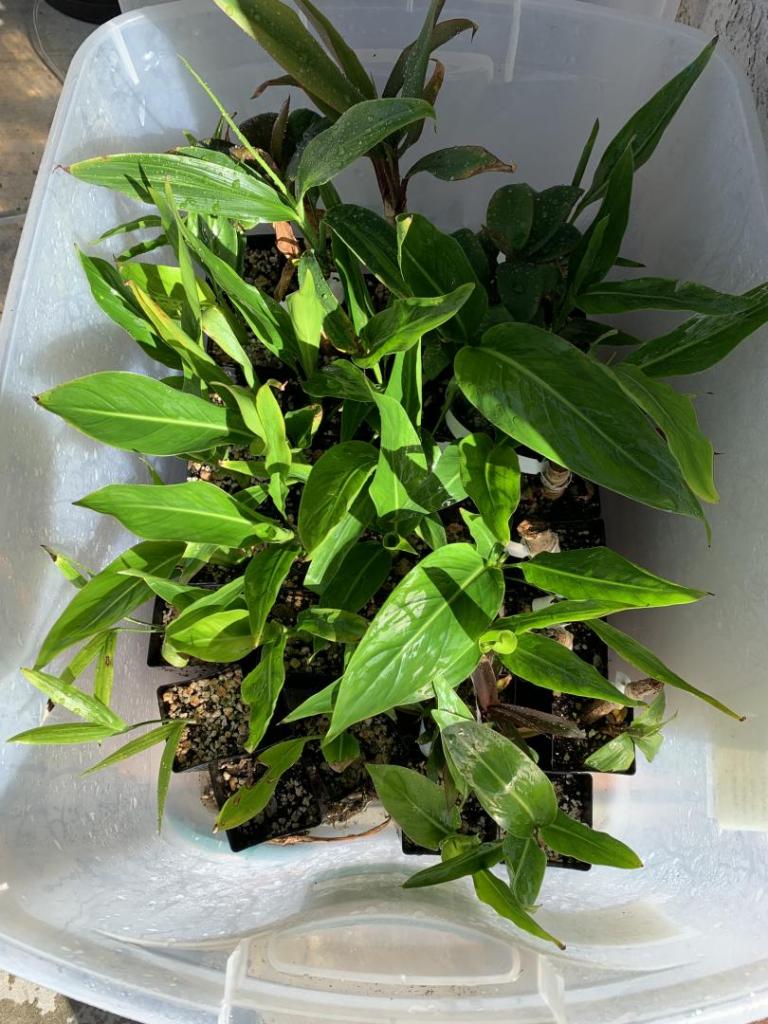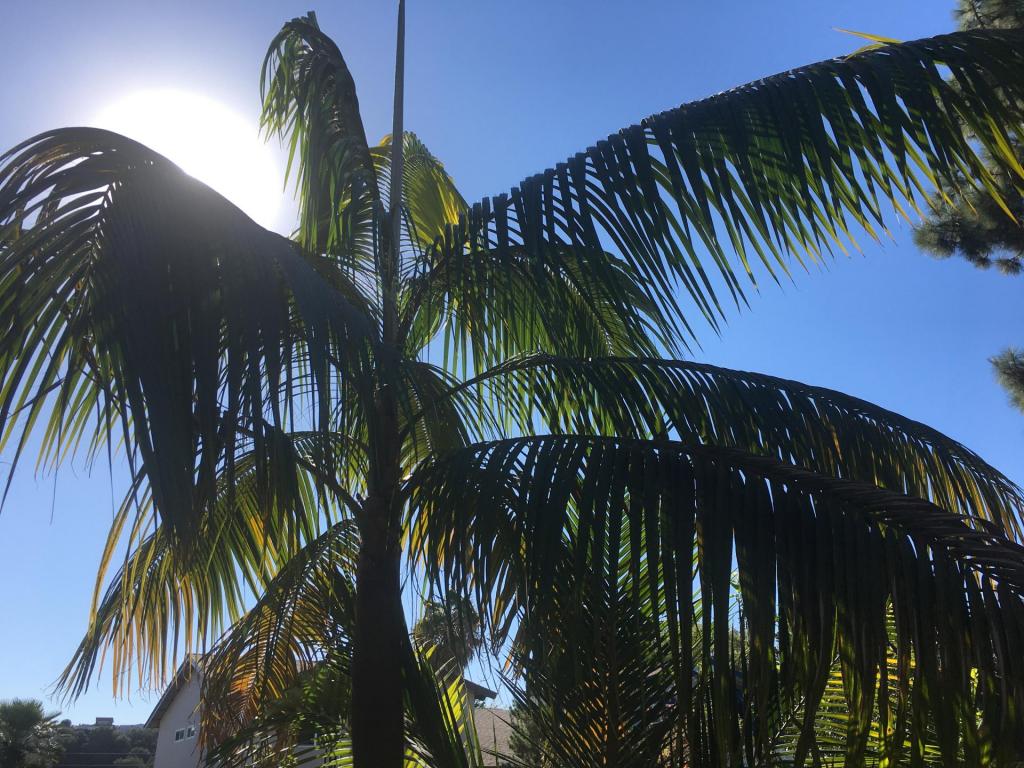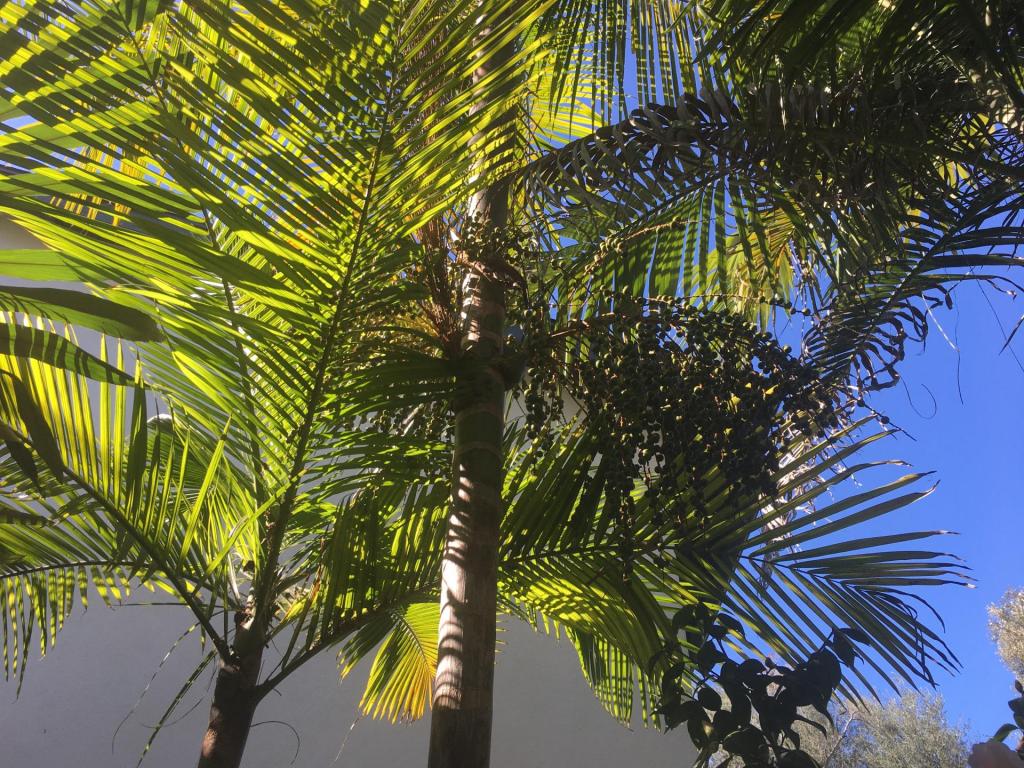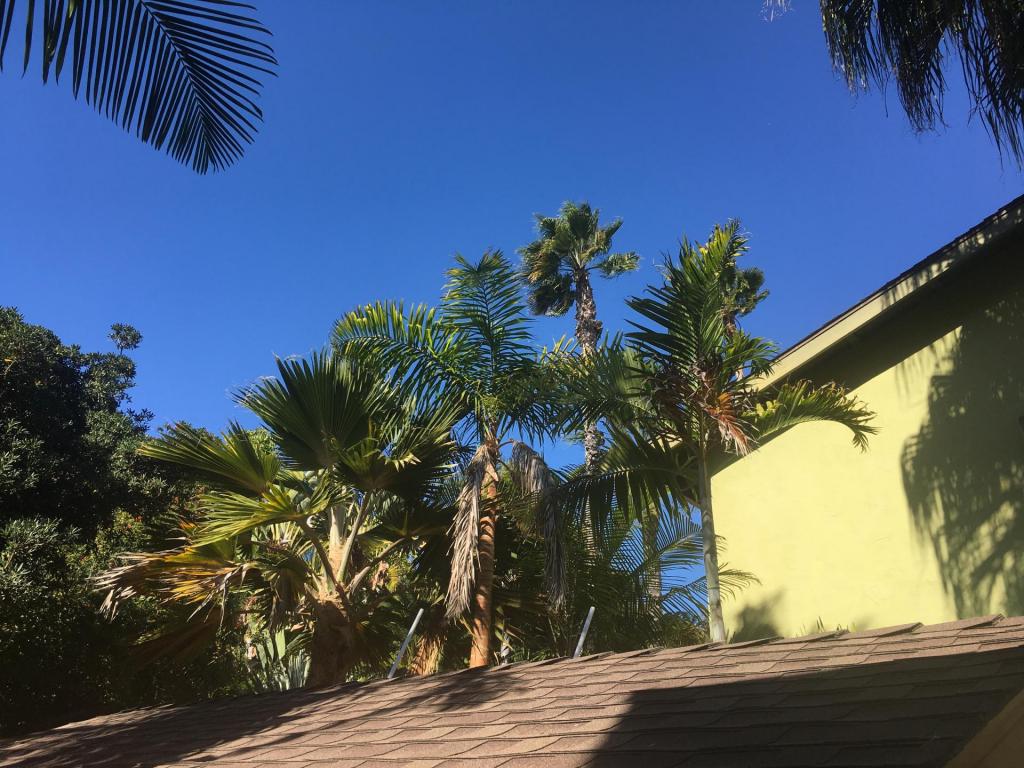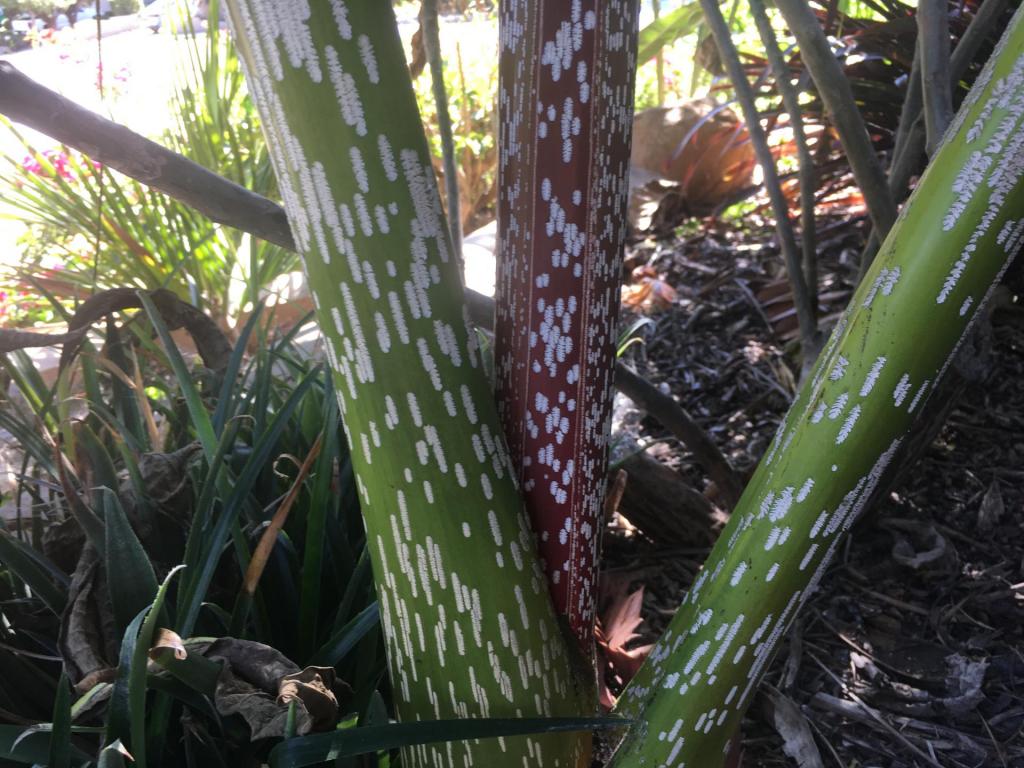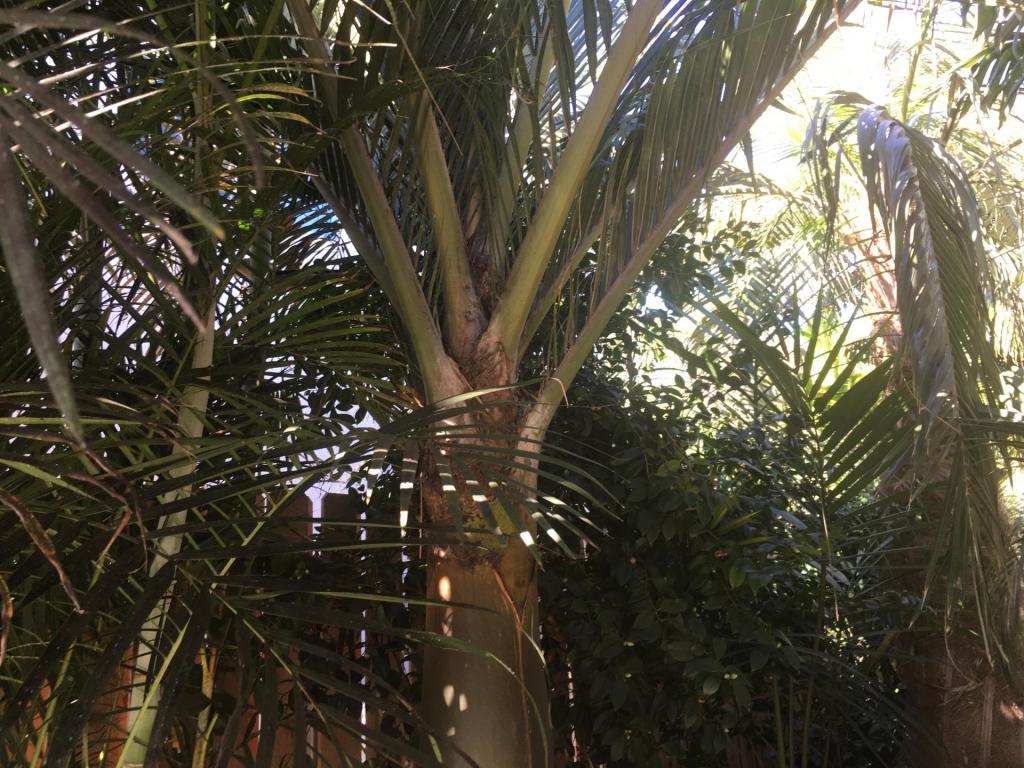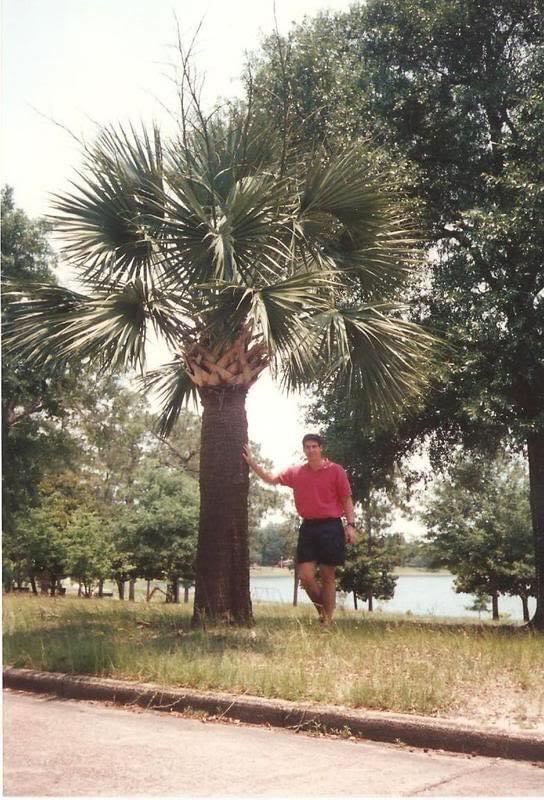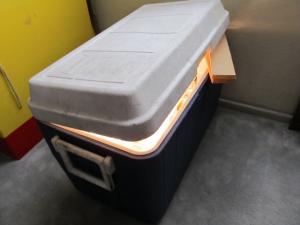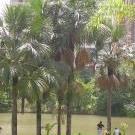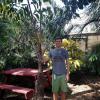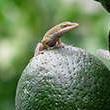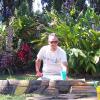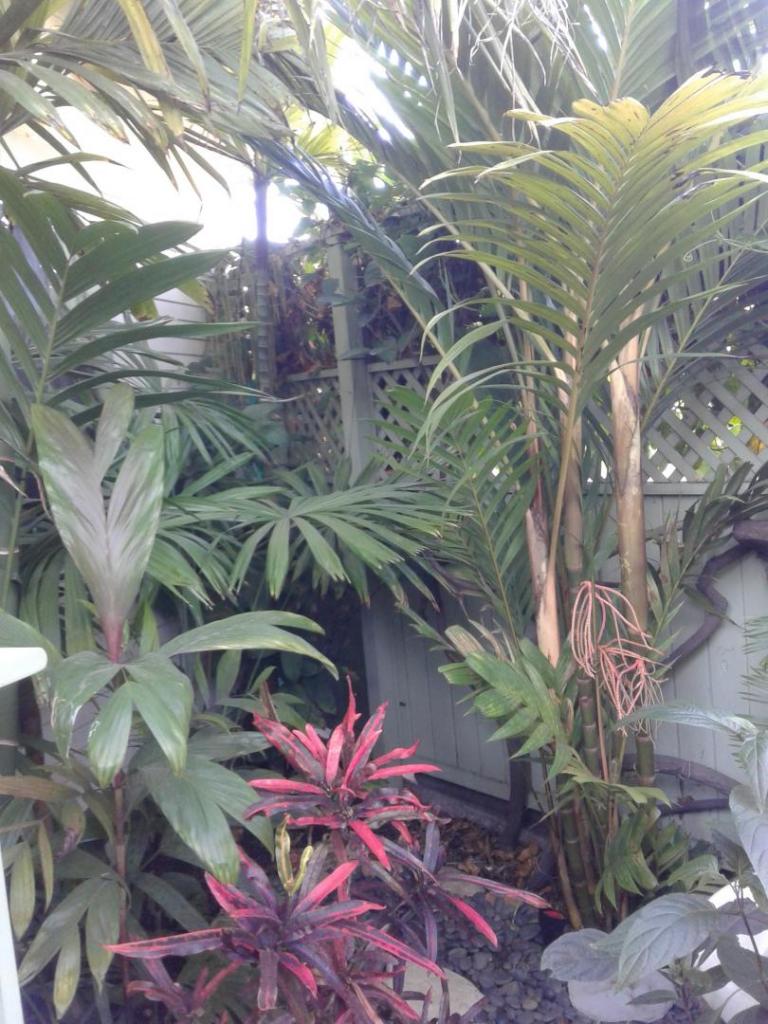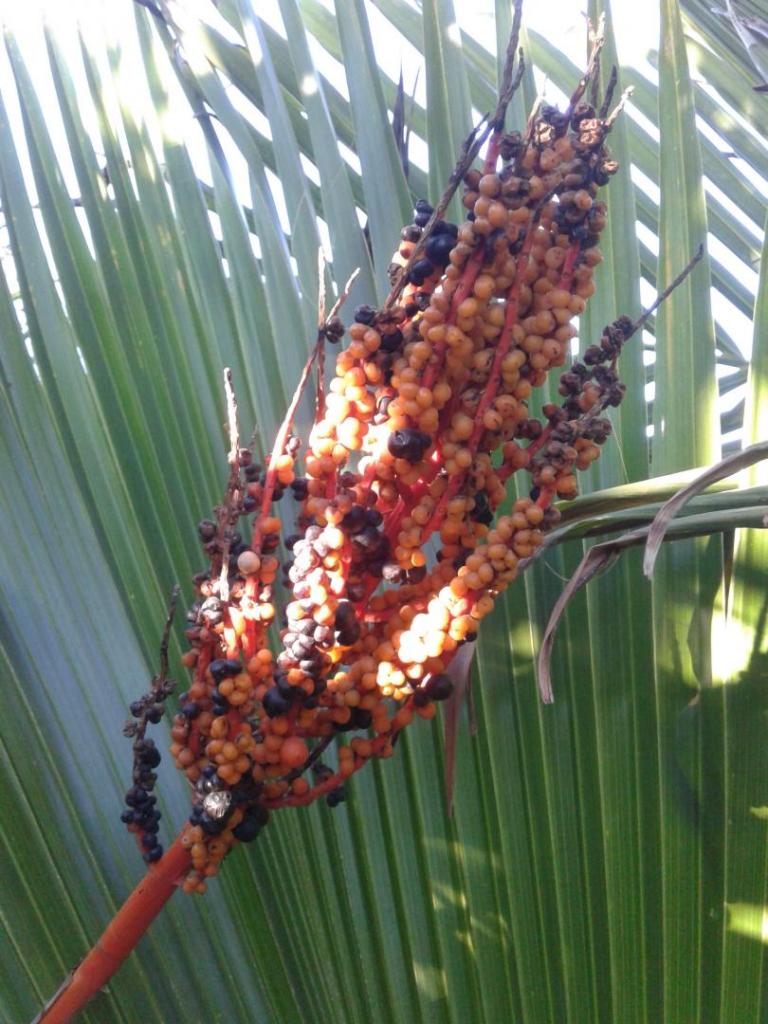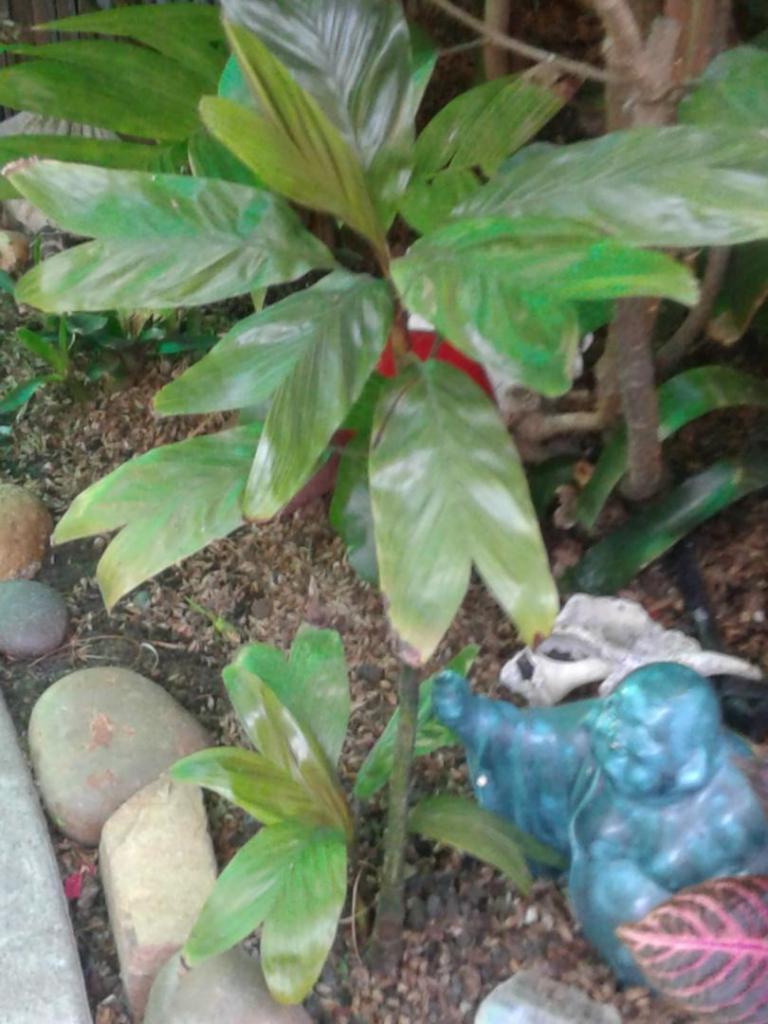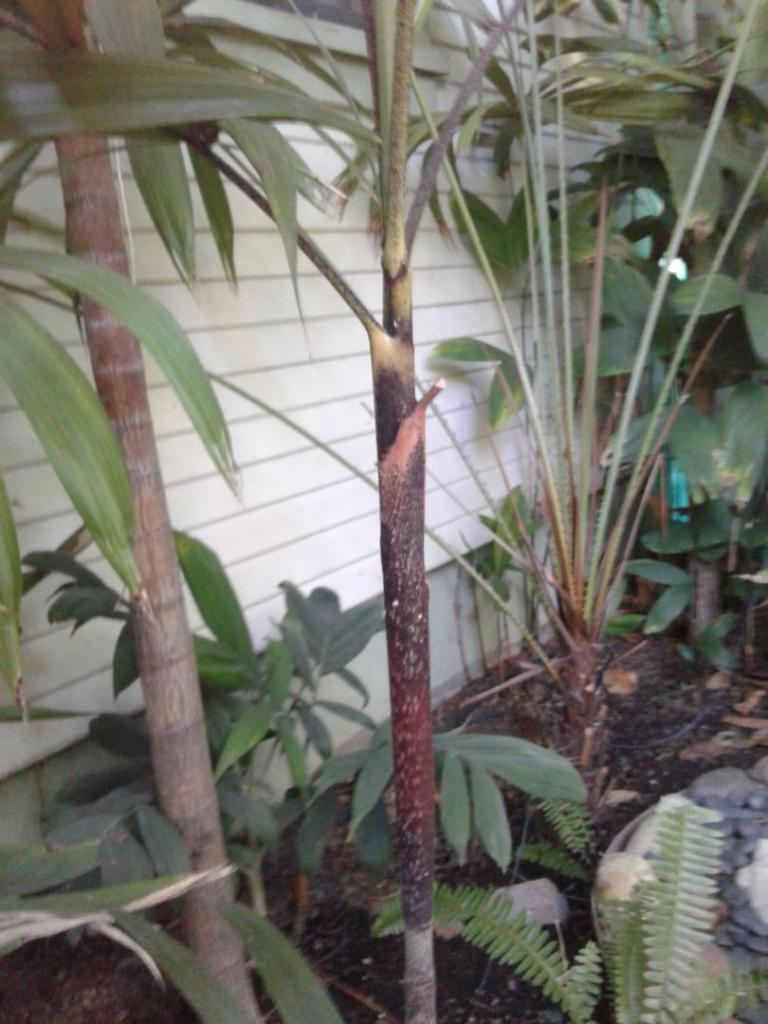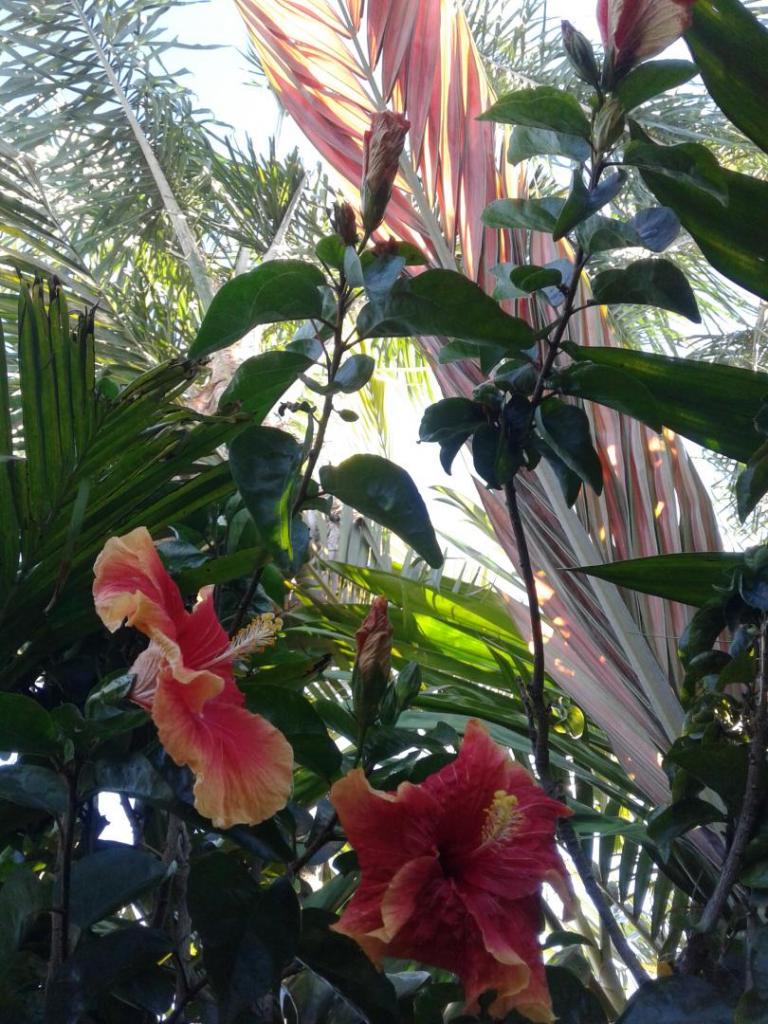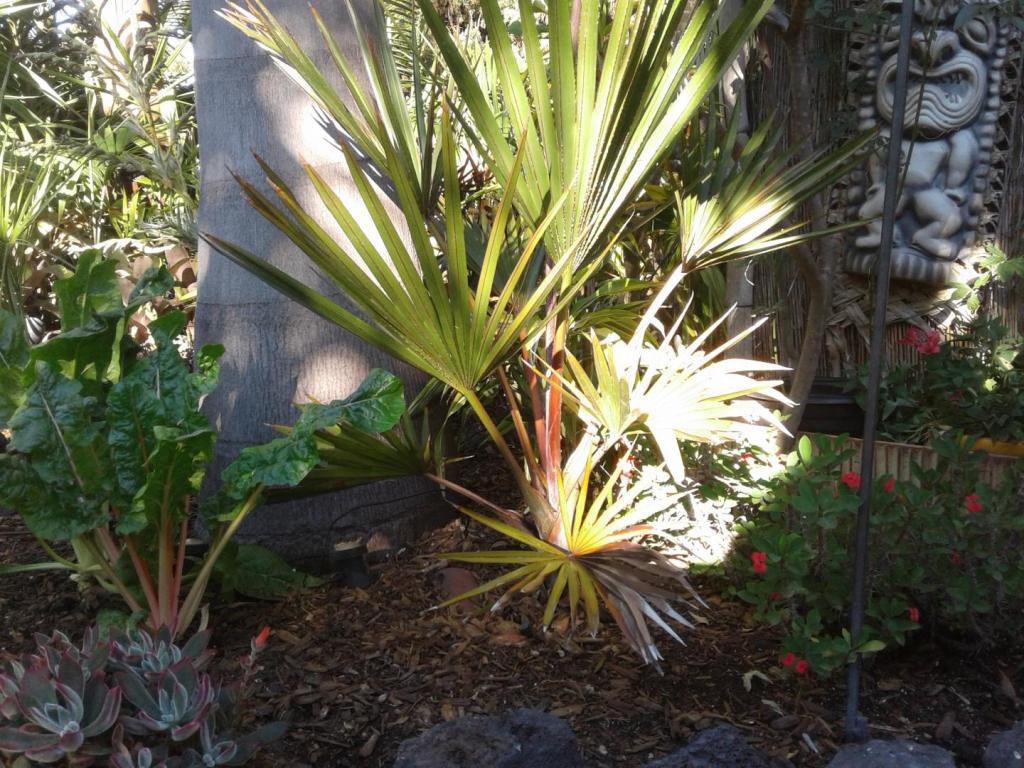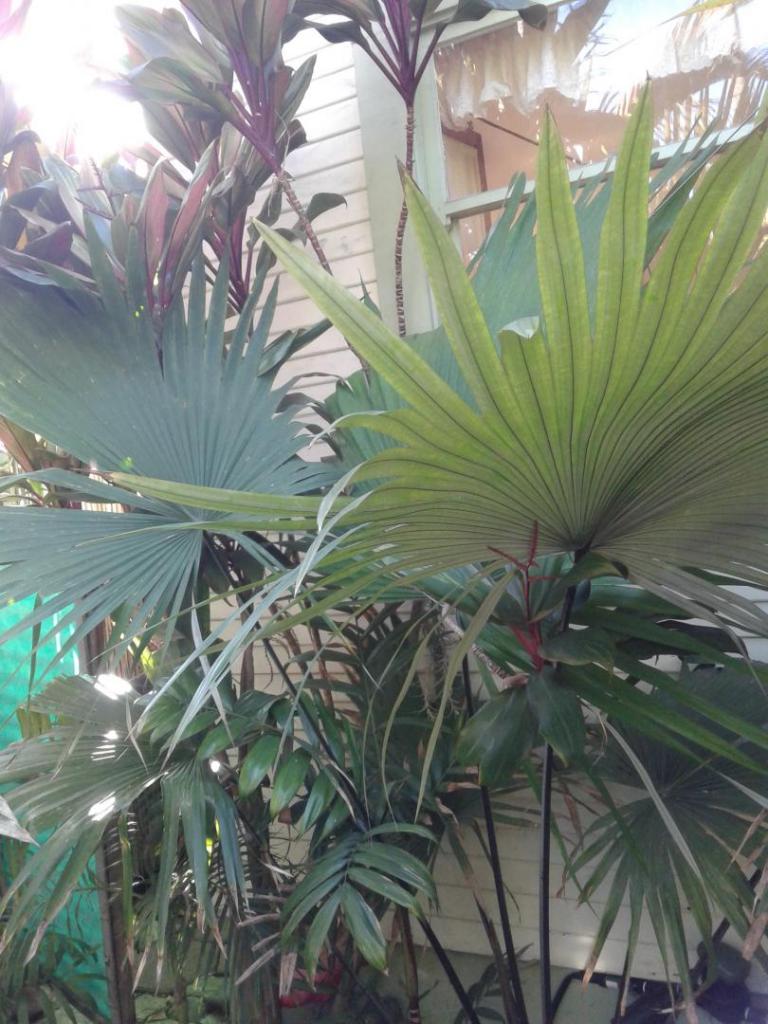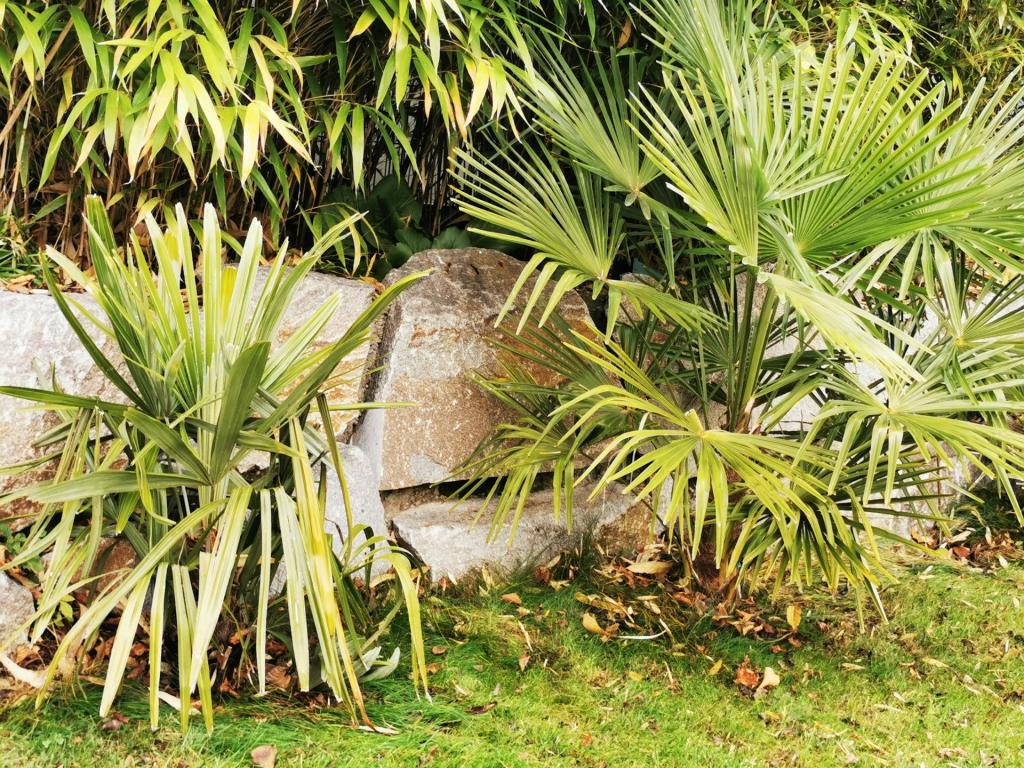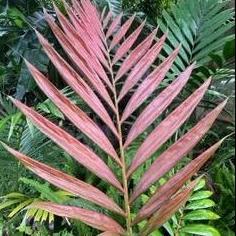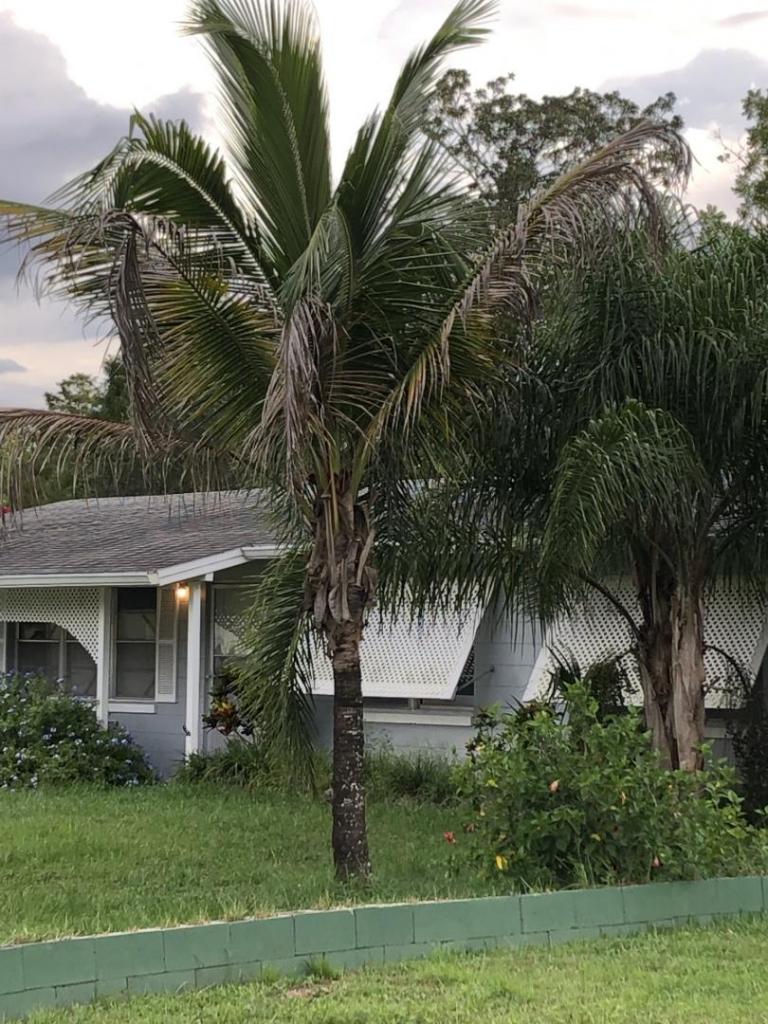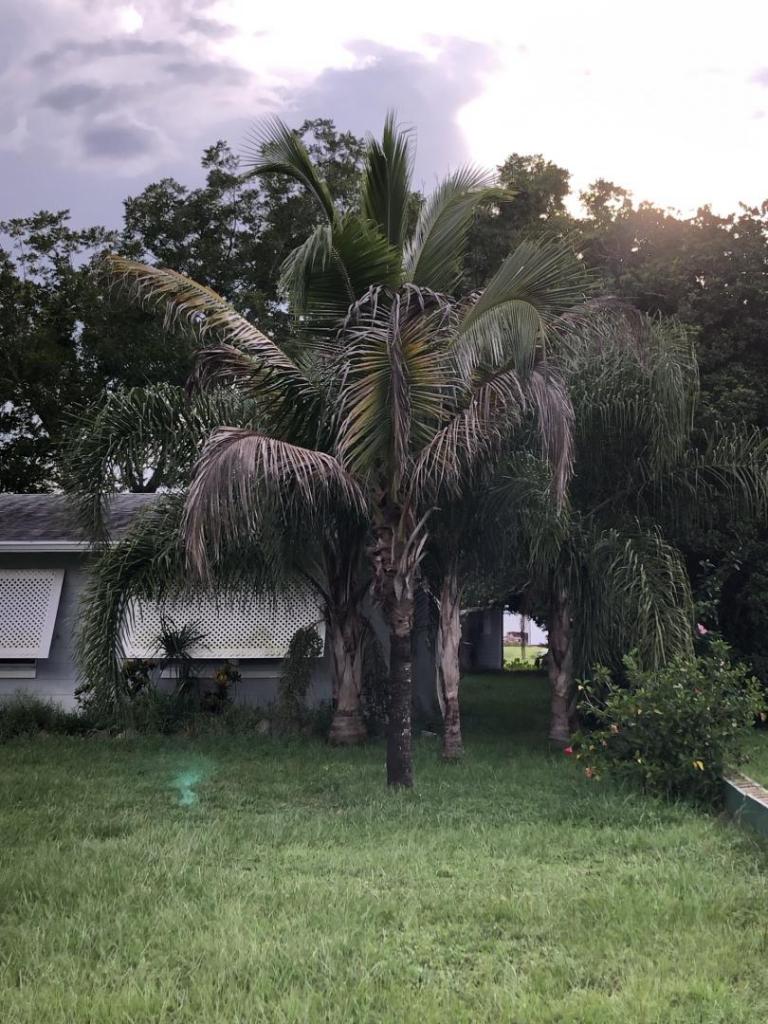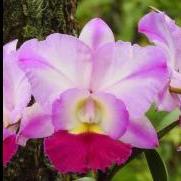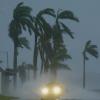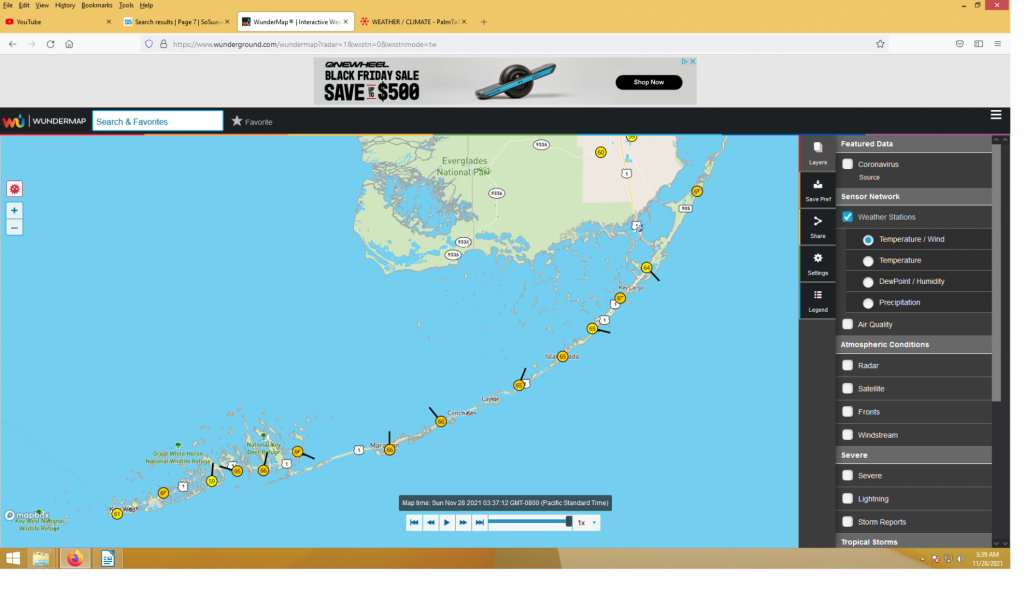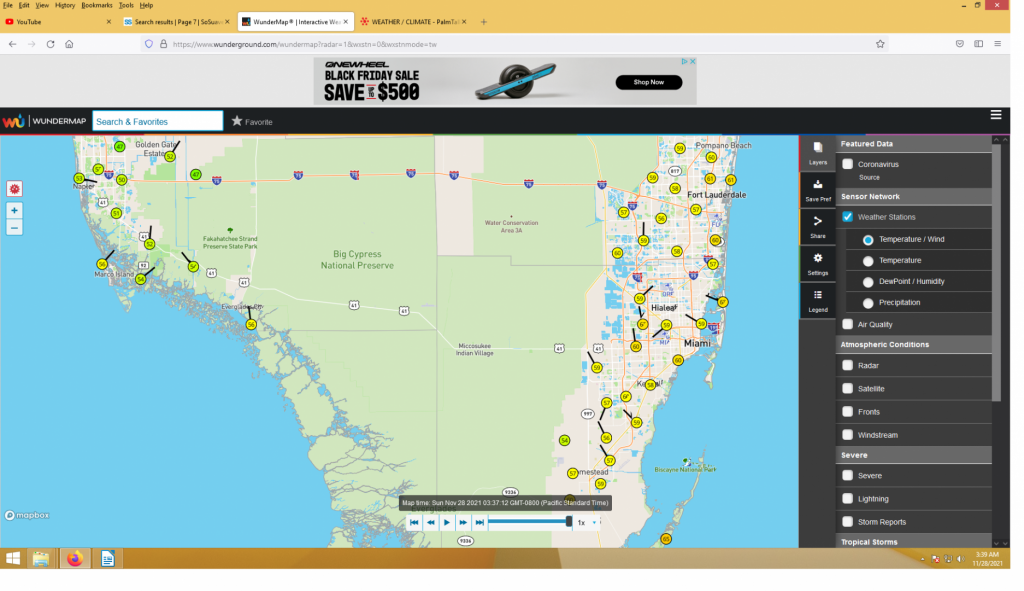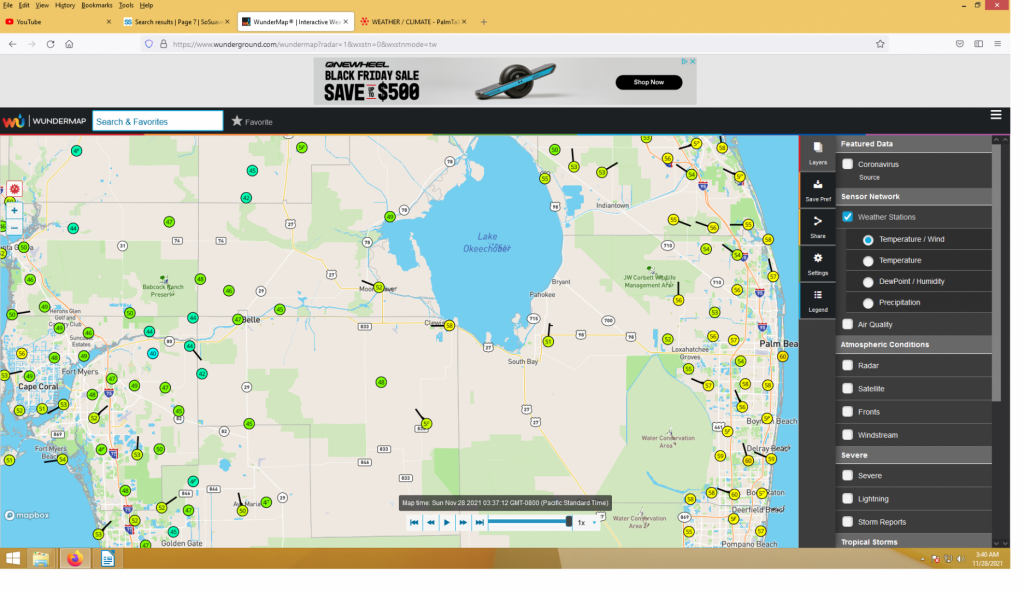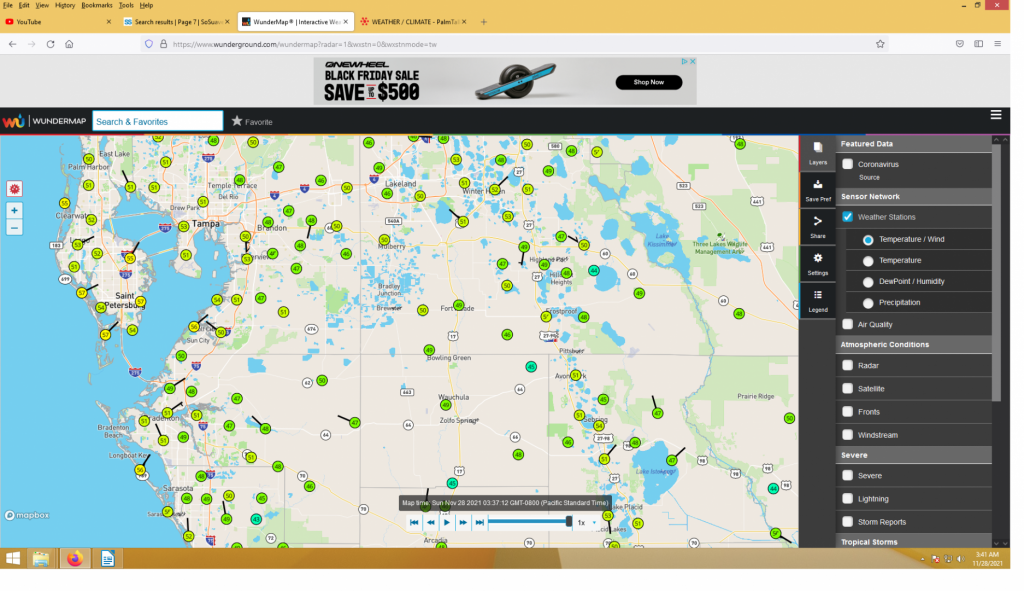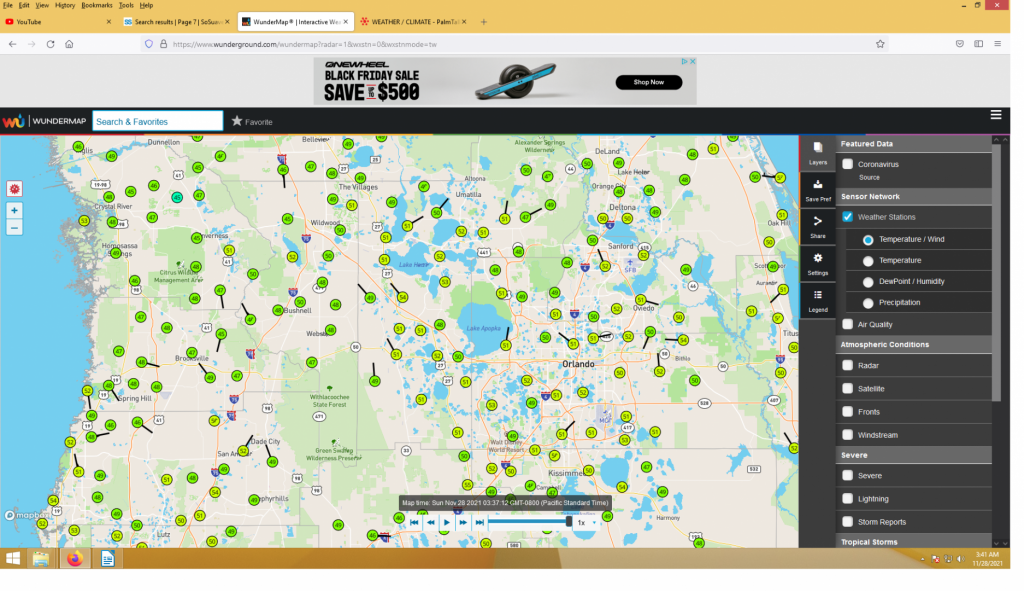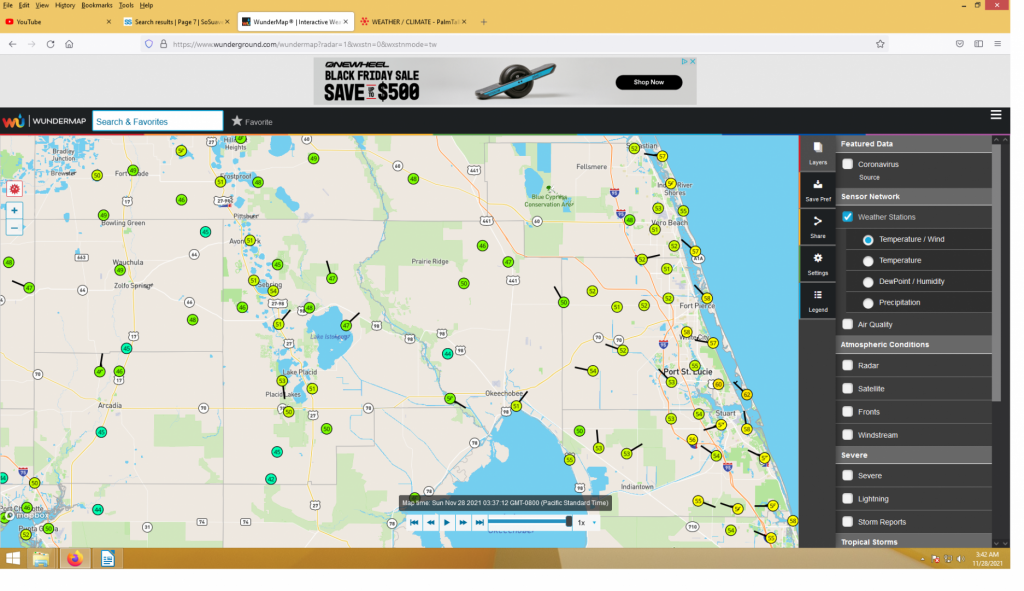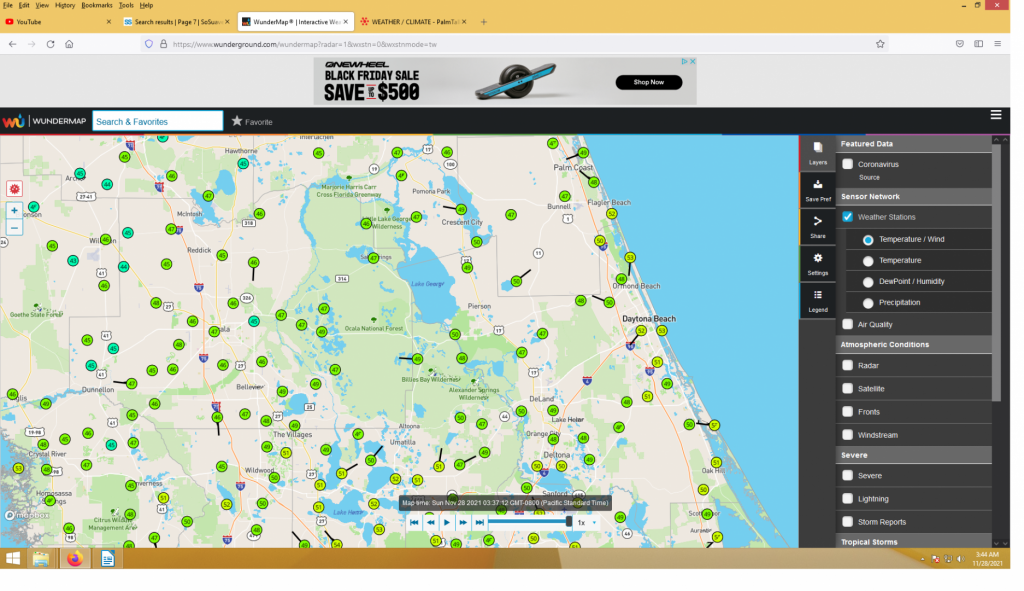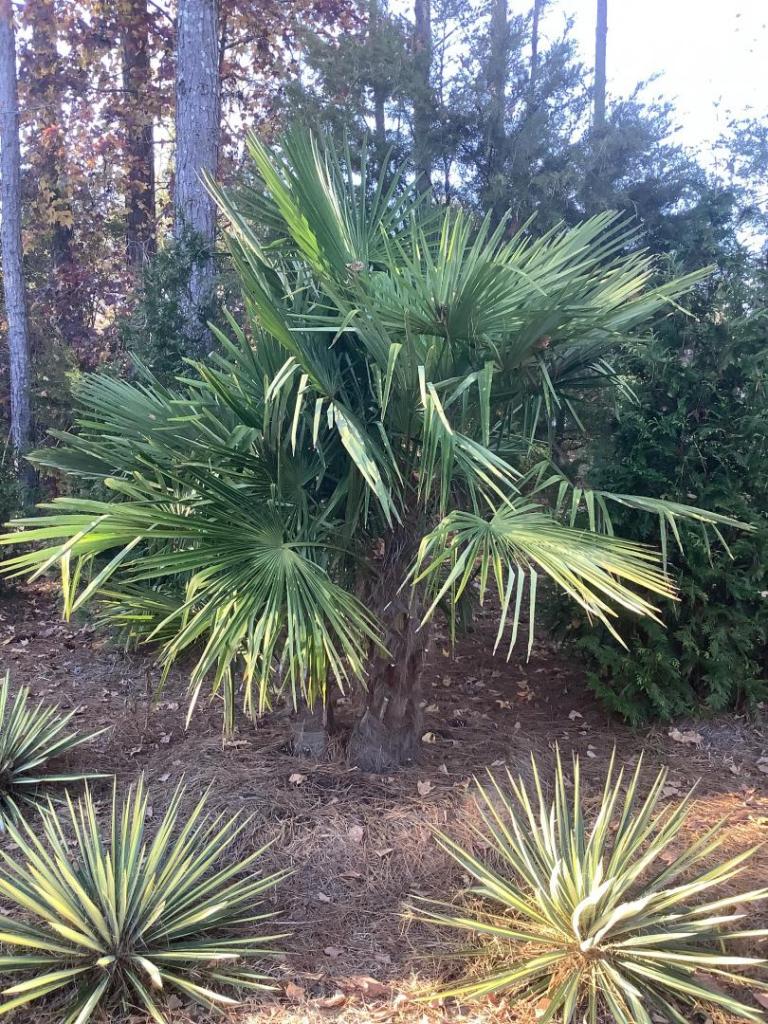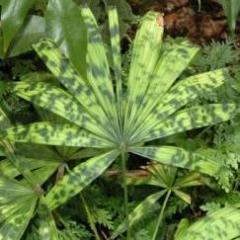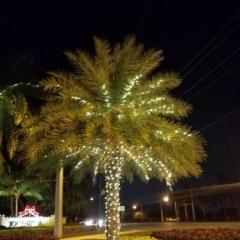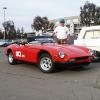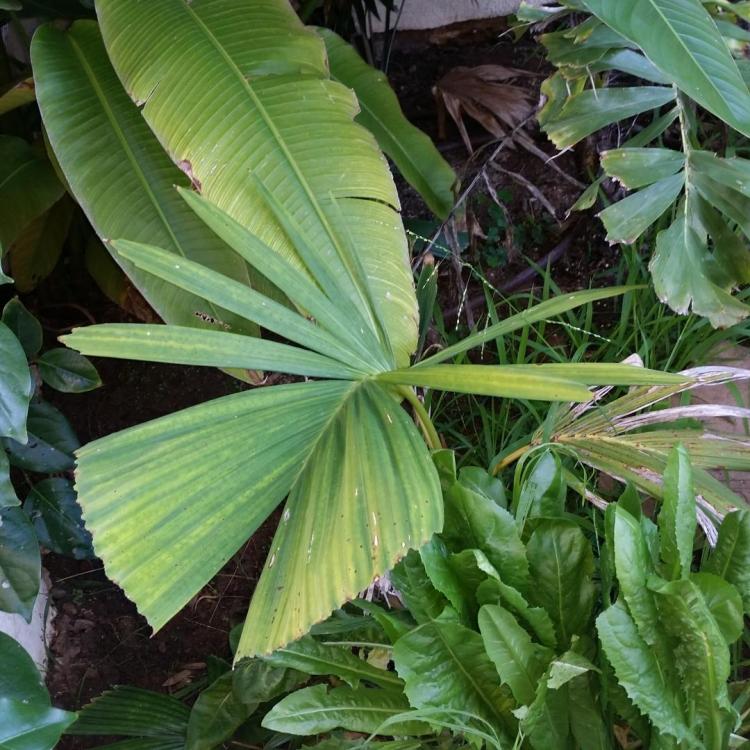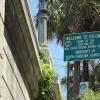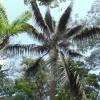Leaderboard
Popular Content
Showing content with the highest reputation on 11/28/2021 in all areas
-
6 points
-
Your location will define the limits of what you can use. Can you grow orchids outdoors? For me they are a favorite for mounting on textured palm trunks at about eye level for some eye candy. Lately I have a developing addiction to Vireya, tropical rhododendrons. Vreisea bromeliads are lovely accents for their patterned foliage, and hibiscus are fine for taller accents. Certain gingers are quite lovely; I really like a tall purple flowering one that has variegated foliage. It appeared in the garden on its own, so I hope it doesn't become a management problem. Ti plants are so easy, and come in so many color variations. Examples below -- orchid, ti plant, bromeliads along a path, hibiscus, vireya6 points
-
5 points
-
Here is another oddball in Hempstead,Tx. This one looks closer to Bermudana. It’s leaves are not recurved like the On this thread. I was told by Peckerwood Garden that they were planted in several location across the Deep South like along the train route or something. I am not sure why this one is leaning. My guess is that there was a tree that is no longer there.5 points
-
3 points
-
Got some Winter planting to do. planted a Few Small Dypsis yesterday. Dypsis Affinis Dypsis Bertch Dypsis Pembana What I left Remaining is 4 Chamaedorea Woodsoniana 5ga’s and 15 GA Jubbie Already Planted a 15ga Jubbie a month ago, but got such a good deal on a 15ga Blue Jubbie had to grab it. Forgot, I also found couple Myolensis Kings which are hard to find so now I have every King Species growing in front yard. love being able to plant Year around in San Diego!3 points
-
I don't fertilize over the winter. It would just be wasted if the trees are not actively growing. April,July,and September are when I apply fertilizer - nothing special - just Arizona's Best citrus food.(plants can't read ) Good idea with adding a little acid for the queen palms. Manganese sulphate is also a requirement for them to help prevent frizzletop. Once queen's get about 10 feet of wood,they seem to develop a myriad of problems in our desert area. aztropic Mesa,Arizona3 points
-
3 points
-
I know in the Parks and Rec world there is a rivalry between the two, there is Parks and there is Recreation. Most of us think of them as the same thing but they are not. Recreation is the active part of it, ball fields, tennis courts, basketball courts etc. Recreation includes all the little league and other sports. Parks is much more subtle with its open spaces and landscapes. Many Recreation oriented people think that Parks is wasted space. Sometimes there are certain grants available that pay salaries, buy equipment if you have enough ballfields to meet the grant's levels. This might be part of it. Some federal or state agency or private foundation may be pro ballfield and is holding out the carrot for more to be built.3 points
-
3 points
-
3 points
-
3 points
-
3 points
-
3 points
-
3 points
-
DYPSIS PEMBANA: seeds from @NatureGirl and seedlings from @PalmatierMeg I used a converted ice chest with 40 watt drop light, lid raised 1+ inches and the temp. is 85 deg. F 24/7, 50-50 Peat / Perlite mix, open plastic tub (no drainage so moisture is more critical - so no standing water, heavy misting daily). Photo is 1 month after first sprout. I HAVE A WAY TO CAUSE THE DEATH OF SOME OF THESE SEEN AND THOSE PURCHASED FROM MEG.....I use 16 oz. styrofoam cups with 4 drain holes in the bottom for potting up from the community pot, moist soil mix, poke a finger hole to allow roots to lower and put more soil mix around those roots.....BUT I LEARNED THAT I DO NOT PACK ENOUGH OF THE SOIL AROUND THOSE ROOTS, so an air pocket is present causing the death. I am making the mix a little more moist and pushing the outer most soil inward on the roots. The family photo of germinated seeds and seedlings was taken in September and most are now creating their 3rd set of leaves.2 points
-
I used baggy method, sphagnum moss with perlite mixed in and dampened. I occasionally spray into the baggy to add moisture, but use a dilute hydrogen peroxide for adding moisture and reduce the probability of them molding. I had a similar issue with Dypsis onilahensis, but success with D heteromorpha and D prestoniana. Ahh... gas water heater in a closet, so I put the baggies in aluminum foil and set on top of the water heater. Still waiting to see what happens with the lanceolata seeds from this season. Your question is almost two parts... which are the easy ones and which are the hard ones that take some unusual tricks or patience. I assumed that I did a poor job cleaning my D onilahensis seeds, but maybe that wasn't the issue.2 points
-
Seems to me that there are a few exceptions for using higher heat with a few of the Dypsis. Baronii and perhaps malcomberi(?) come to mind as germinating better at room temperature. May be others.2 points
-
Hi ZenMan, You really shouldn't post your address on here in public. PM bill with it. Anyone on the internet can see your name and address now.2 points
-
2 points
-
2 points
-
2 points
-
2 points
-
There are a lot of tropical “companion” plants for palms. If you want that look, many have Bromeliads, Crontons, Ti’s, BoP’s (you mention), Agave’s, Cyad’s, Bamboo, Heliconia’s are just some. One also has to consider your zone of course.2 points
-
2 points
-
I live just off of lake Brantley, in Longwood FL, about 300 yards West of the lake. There’s a few 20’+ Roystonia regia directly on the waterfront in back yards, (will get photos soon) and this coco just a few blocks away. This coco is on the NW side of the lake, not sheltered much from the main lake affect, I believe.2 points
-
I usually use pruning shears or loppers, but when that isn't enough:2 points
-
The IPS board recently approved a tentative tour to Hawaii starting with a welcome dinner on Sunday, October 9, 2022 and ending with a farewell dinner in Hilo on Saturday, October15, 2022. Although planning continues, there is great uncertainty regarding how the pandemic will affect travel.2 points
-
2 points
-
PDN is offering this palm and I couldn't resist giving it a try. There's very little information on web on this specific variety so please let me know if you have anything else! Here's the description from PDN: "This is a limited offering of seed grown plants from an odd, but well-known palm in the Florida panhandle town of DeFuniak Springs, spotted for its unusual character by a number of palm fanatics through the years. Thanks to Alabama palm guru, Hayes Jackson for sharing seed. Palm experts agree that the trunk looks like Sabal bermudiana, while the top more closely resembles Sabal minor var. louisiana. Some folks think it may be a Sabal minor x palmetto hybrid. Anyway, if you'd like to try them along with us, here's your chance." https://www.plantdelights.com/collections/sabal/products/sabal-defuniak1 point
-
1 point
-
Are the petioles armed? I can’t see any teeth even when zooming in although it might just be the photo resolution which makes it difficult to see. If they’re not armed, it probably has to be B. ‘super silver’.1 point
-
1 point
-
I will be watching these. And they are in a high visibility area.1 point
-
My best attempts in S. Florida with I. deltoidea all involve container-grown specimens, none in the ground. They get nice and full in a pot then just sit there and slow down. I have seen two specimens planted in the ground while in a modified pool enclosure (a bubble). At the time, they measured maybe 8 ft. (2.4m) in height with nice leaves, over-sized leaflets and an array of stilt roots between them. The two specimens were being grown in ideally manufactured conditions. Specimens need constant moisture and humidity, but not extreme hot or cold. The roots need exceptional drainage. The key growth factor centers around the newly forming stilt roots. The downward-growing aerial roots need regular moisture to prevent them from drying out. Even a short dry spell would be detrimental as the tips dry and shrivel up and thus, the roots do not reach the ground. The palm then can't grow upwards without the support, then stalls; as restarting a stilt root can be tough on a small plant. The species is designed to be a rocket; to grow as fast as possible, in wet, uneven terrain covered in leaf litter, and reach tall heights before flowering and fruiting. Most any palm obtainable is easier to grow in S. Florida than Dictyocaryum lamarckianum... Collectors will always try though... Ryan1 point
-
1 point
-
1 point
-
Bizzies are notorious for being root sensitive. The likely hood of a successful move is slim. Hopefully you can find another way. T J1 point
-
Forget P. wrightii in FL. Not adapted to the climate, no matter how much heat it might take here.. Not doing so great in areas of the state where the water table has been dropping as it is. Don't think even the eastern U.S. native P. occidentalis reaches further south than about central FL. Don't feel sorry for anyone who'd willingly plant an evergreen Ash.. Horrible tree. Much better choices.. As far as the suggested choices made in the article... If they're going to do more shade trees, why aren't they looking over natives -first- vs. looking at the worst options possible - Temperate Eastern U.S./ European -type choices. S. FL has several great natives that are adapted to the area ..and will withstand hurricanes, and look tropical. Add in other native trees from the Caribbean Basin and.. Heck, Allspice, Pimenta dioica, is native there ( unless S. FL has bulldozed all of them, along with all of the other natives.. ) Plant a ton of those.. Whether in Fl. here, or back in CA. Will never understand what motivates some of the street tree choices made.. Numerous are among the worst possible, or at least are utilized for poorly thought out applications.1 point
-
Happy to drift as it puts my "for sale" post up to the top of active threads which is good for sales! ahahaha I don't know how big yours is but I've tried collecting from ones under 25-30 foot tall and been disappointed. It's a time consuming process. The flowers are solid like wood and slowly open as they dry out exposing the seeds. The ones in the pics below have taken well over a month to slowly complete the drying process even though they already looked dry when removed and so every week I go through them with a pair of thin needle nose pliers to pick them out as a bird would. There's no way to pick them out with your fingers really. @Silas_Sancona re-educated me on the blue "aril" in another thread when he wrote the quote below. I then remembered hearing the term in one of my classes some 40+ years ago in AG school. On the smaller trees the aril is present but very few if any seeds and the aril looks like some in the pics below where you see the blue aril with just little dots where a seed would form. "Is what is called an "Aril" ...a Fleshy covering that covers the part of/ entire seed of some plants to aid in being dispersed by Birds/ other animals.. The bright colors attract more attention. Did not realize these were bright Blue, cool.. Aril coverings that are Red or Orange are much more common in other things. "1 point
-
1 point
-
This Mystery, Magical palm has done what its not supposed to be able to do. Live in California. First, a couple years back it was growing in the ground in northern California. Then the owner moved and dug it up, only to be moved down to southern California and planted again and keep growing. Apparently it has lived through two winters in California. But the owner is leaving the continent now... Do you know what it is?1 point
-
@dave-vero If you wanna go to the Big H, maybe check out my place, too. Half an acre, 160 palm species. But, San Diego is Jerusalem for palms in So-cal.1 point
-
SD Zoo has a great collection of palms. I totally agree with GottmitAlex, Adventureland in Disneyland is amazing, especially Jungle Cruises, it's so dense and lush you'll feel as if you were in the tropics. From Disney's website: "Through the years, the tall trees engulfing the Jungle Cruise have created a lush canopy that regulates the temperature inside this Hollywood Jungle, allowing plants that you won’t find anywhere else in Southern California to thrive right here in Disneyland park."1 point
-
Thank you so much Tom for showing me around Southern Californian Palms! I had a great time seeing what was being grown down there, and was surprised how great all of the palms looked! I have some highlights posted here and then a link to the rest of the photos at the bottom! I forgot the names of the Dypsis, so please feel free to chime in! Sabal mauritiiformis Dypsis cabadae x decaryi Tahina spectabilis Dypsis onilahensis hybrid Syagrus botryophora1 point
-
The transition at Tom's Garden: Hyophorbe lagenicaulis, H. lagenicaulis x verschaffeltii, H. verschaffeltii Arecina sp. Ravenea sambiranensis Jubaeopsis caffra Dypsis lutescens - this is a common palm, but one of my favorites!1 point
-
Here are some pics of my microclimate; not ideal for "showing off" my palms but it's a nice testing area for my borderline palms. So far, I have a W. Robusta, the Coccothrinax Hiorami and in the very corner is my Laccospadix Australasica. Closeup of the Coccothrinax The "opening" that will give my Coccothrinax the afternoon sun it needs. This was taken at midmorning; you can see the sun is heading in the direction to give the Coccothrinax it's needed sunshine.1 point
-
1 point
-
I don't know what this palm is…. Rhopaloblaste ceramica maybe? Ravenala madagascriensis again Areca vestiaria Native pest control Hydriastele costata1 point
-
E guineensis is also a popular landscaping palm here. These are growing along the Quepos waterfront. There are millions of these palms planted around this area as palm oil is big business here. Unfortunately, seedlings pop up all over the place (like Sabals did in FL) and they are really becoming a pest. When the palms get too tall to harvest the seeds, they poison them and plant new ones underneath. It's quite a sight to see hundreds of acres of tall brown African Oil Palms. I've heard they have come up with a dwarf version that stays smaller and more compact and makes it easier for seed harvesting. Here are some shots of the African Oil Palm plantations from the air after taking off from the Quepos airport.1 point

